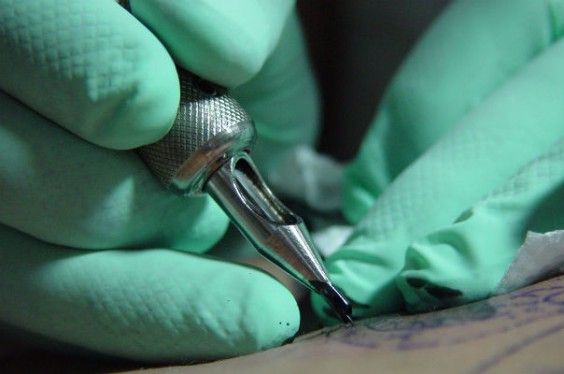Greatist News examines and explains the trends and studies making headlines in fitness, health, and happiness. Check out all the news here.
New needles, new gloves, properly sterilized rooms, no tattoo problems, right? Not so fast, according to a consumer safety alert recently released by the Federal Drug Administration (FDA).
An outbreak of Nontuberculous Mycobacteria (aka NTM) infections found on recently healed tattoos is spreading across the United States. Investigators believe a California-based tattoo ink manufacturer is where the contamination began.
What Happened
Tattoos won’t just piss off parents, they might also cause some nasty infections.NTM-infections usually crop up as itchy, red bumps surrounding a recently acquired tattoo and if left untreated can lead to lung disease eye, joint, and lymphatic system complications. Reports of NTM-infected tattoos began pouring in last January from New York, Washington, Colorado, and Iowa. The investigation was conducted by the FDA in cooperation with local health authorities and the Centers for Disease Control and Prevention (CDC).
Don’t worry, this isn’t an ink-apocalypse. Most of the infections came from one California supplier who had contaminated inks. Epidemiologists think NTM got into the ink through unsanitary water, glycerin, or pigment, which was added in the production process.
But the scariest part about the current NTM outbreak is that, to the naked eye, contaminated tattoo ink is barely discernible from its sterile counterpart. Sound bad? Well…
The Good News
Those who receive immediate medical attention for their NTM-infected tattoo woes won’t develop further NTM-associated complications. Anyone who sees signs of NTM-infection on their own or others’ tattoos should get to the doc ASAP and report their cases to MedWatch.
Already Inked? Here’s what to look for:
- Lesions, rashes, swelling, itching, burning, or pain in or around the tattooed area that develops two to three weeks after getting tattooed.
- More severe symptoms include coughing, fevers, loss of appetite and energy, night sweats, weight loss, and blood in phlegm. Blech!
- Ask tattoo artists if they use ink that has been processed or formulated with FDA-approved pigments.
- Stick to green and blue pigments. They’re made from copper salts, the safest ingredients for ink. (The FDA has also approved copper salts for use in contact lenses, paint, and surgical implants.)
- Avoid red pigments — they’re most likely to cause allergic reactions, due to the cadmium and mercury they contain.
- Verify your artist has been vaccinated against Hepatitis.
- Get the tattoo artist to open an autoclave (the sterile bag new needles and tattoo ink cups arrive in) in front of you.
- Make sure the artist puts on new gloves if they walk away from the tattooing process at any time or if they pick up anything other than sterilized equipment.

